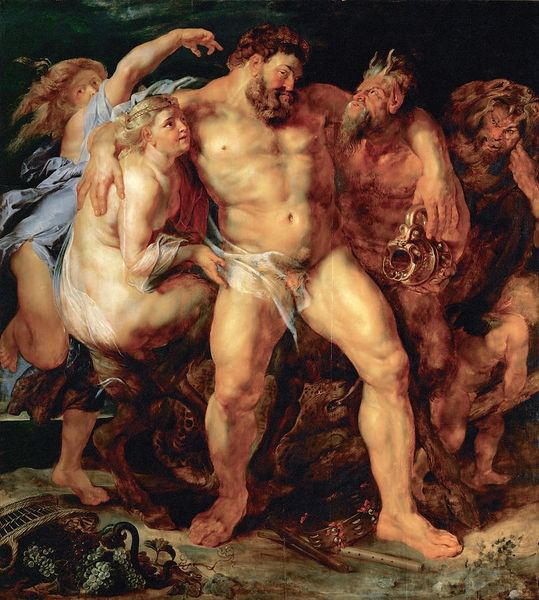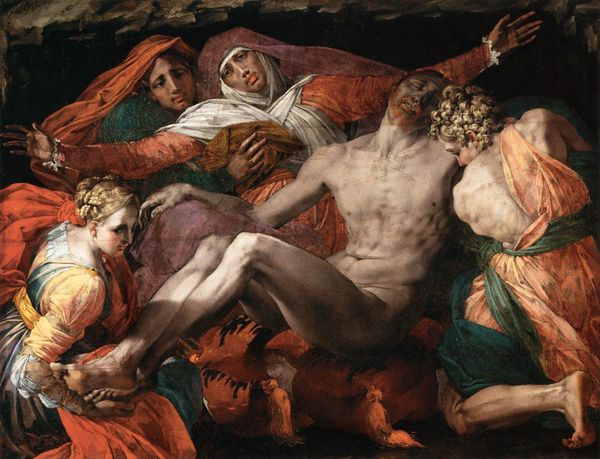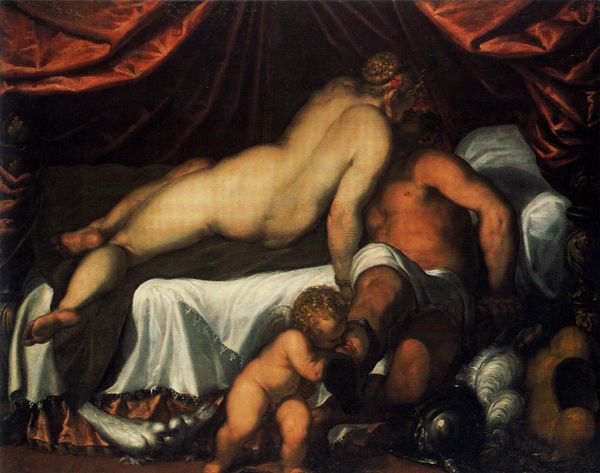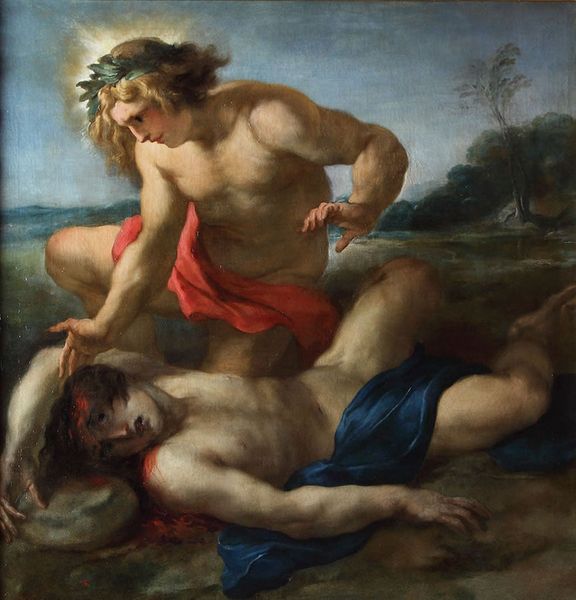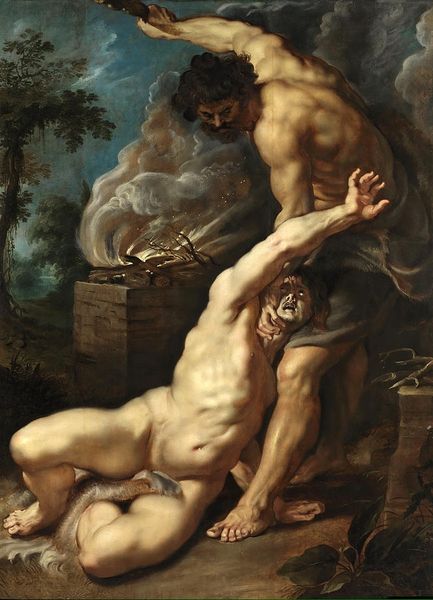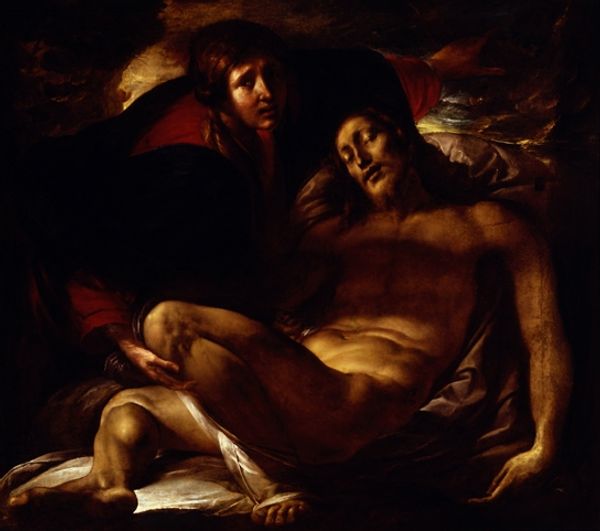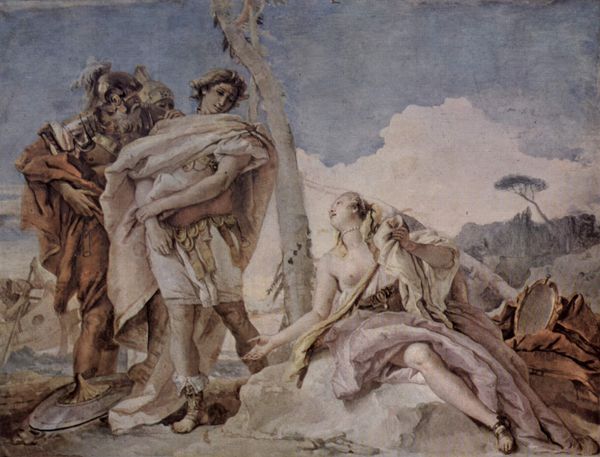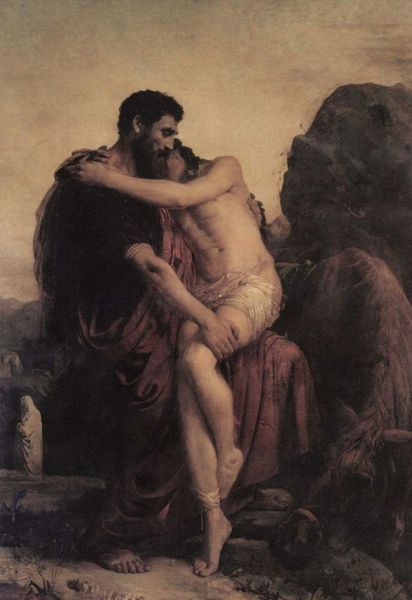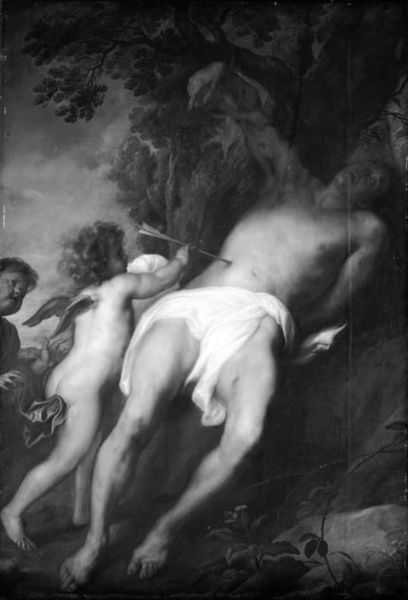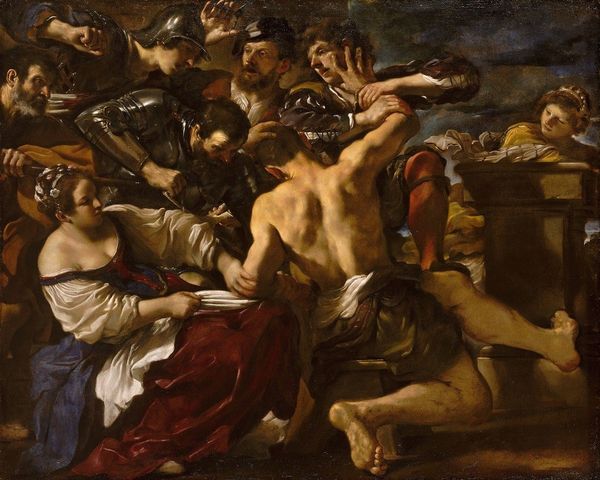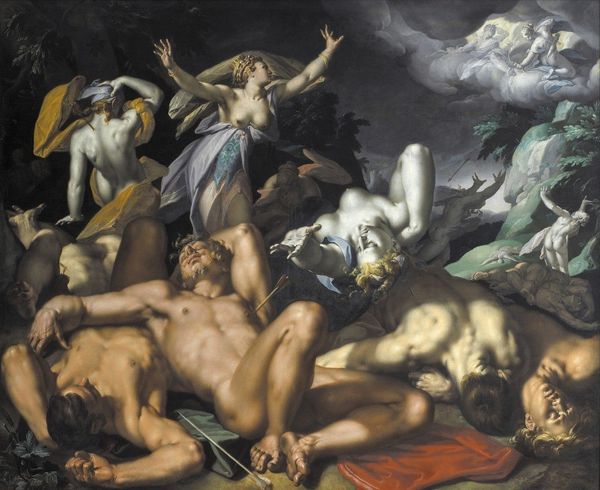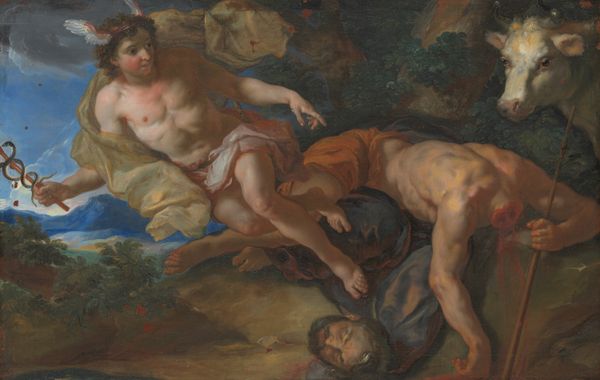
oil-paint
#
baroque
#
oil-paint
#
figuration
#
oil painting
#
roman-mythology
#
mythology
#
human
#
history-painting
#
nude
Dimensions: 232 x 182 cm
Copyright: Public domain
Jusepe de Ribera painted Apollo and Marsyas in oil on canvas, but the date of its production remains unknown. Here, the flaying of Marsyas becomes a stage for the display of power. Ribera shows us Apollo, god of harmony, torturing the satyr Marsyas, an expert musician who dared to challenge Apollo's musical skill. Painted in Naples, then under Spanish rule, the picture can be seen as commenting on the violence of colonial power, but also on the politics of artistic academies, with Apollo representing the established, classical style, and Marsyas the more earthy, vernacular tradition. The image is one of horror, and Ribera's naturalistic style leaves nothing to the imagination. The agonized expression of Marsyas and the calm, almost studious face of Apollo are particularly striking. To fully appreciate Ribera's work, it's important to consider the political and artistic climate of 17th century Naples. Through historical archives and critical analysis, we can come to understand the complex social dynamics at play in this brutal and compelling painting.
Comments
No comments
Be the first to comment and join the conversation on the ultimate creative platform.
